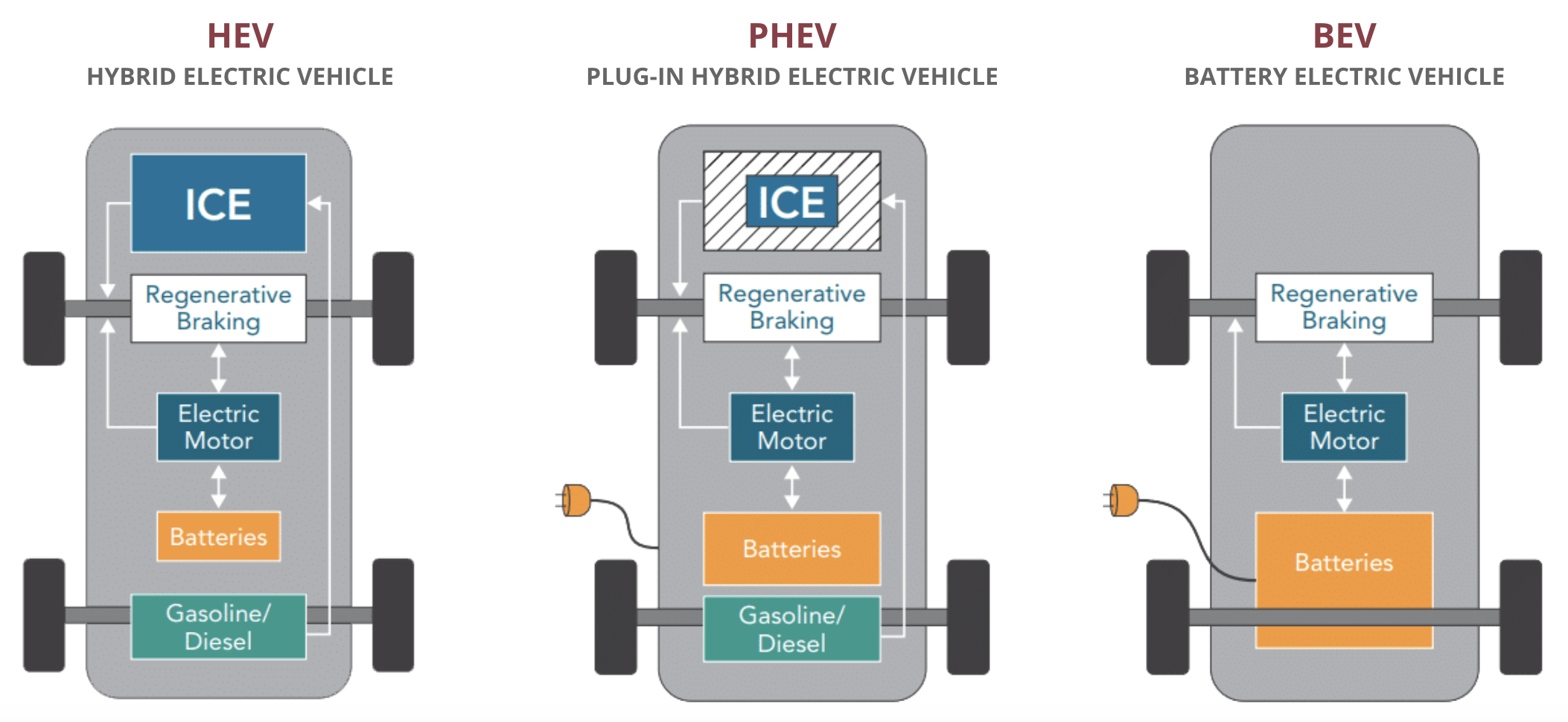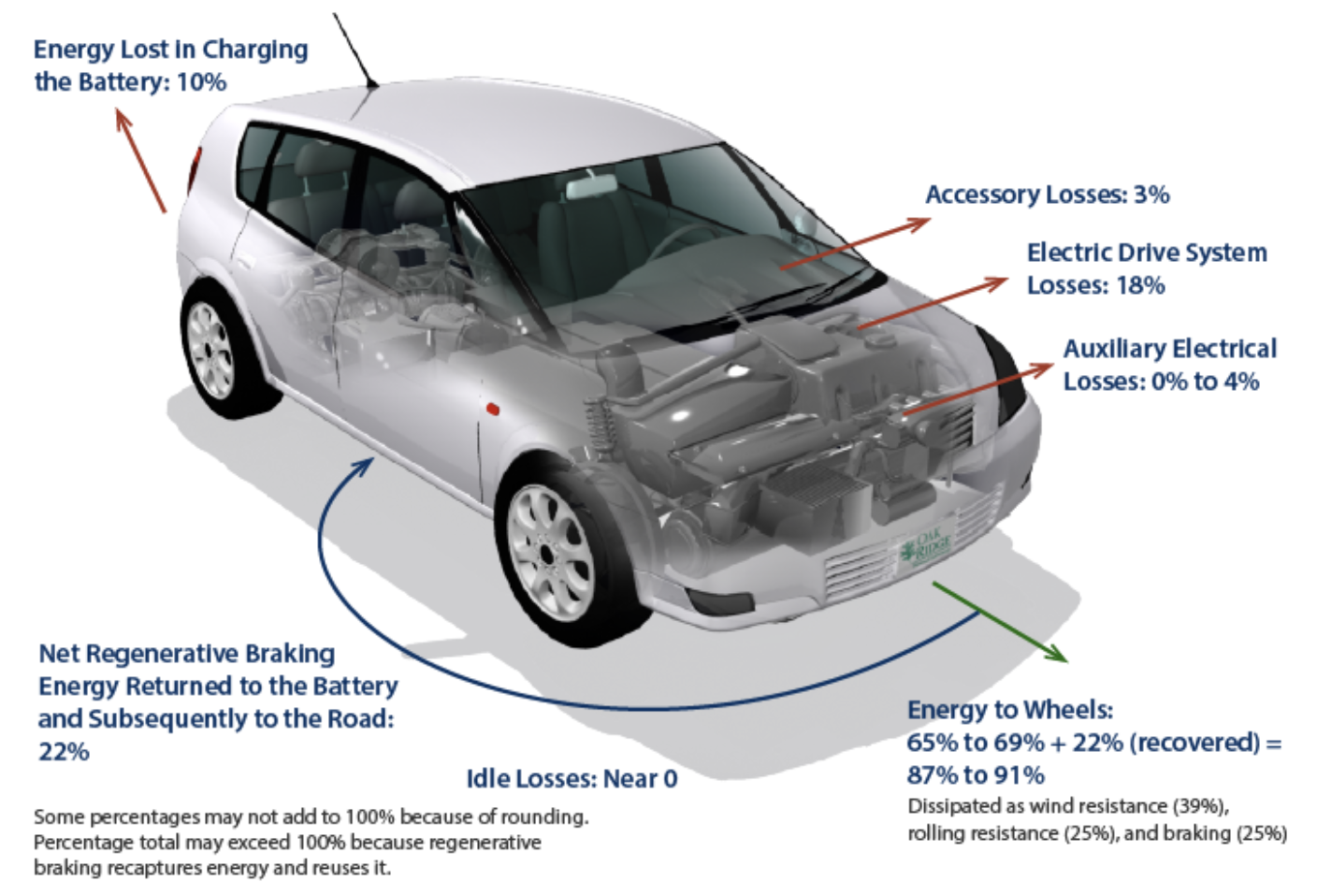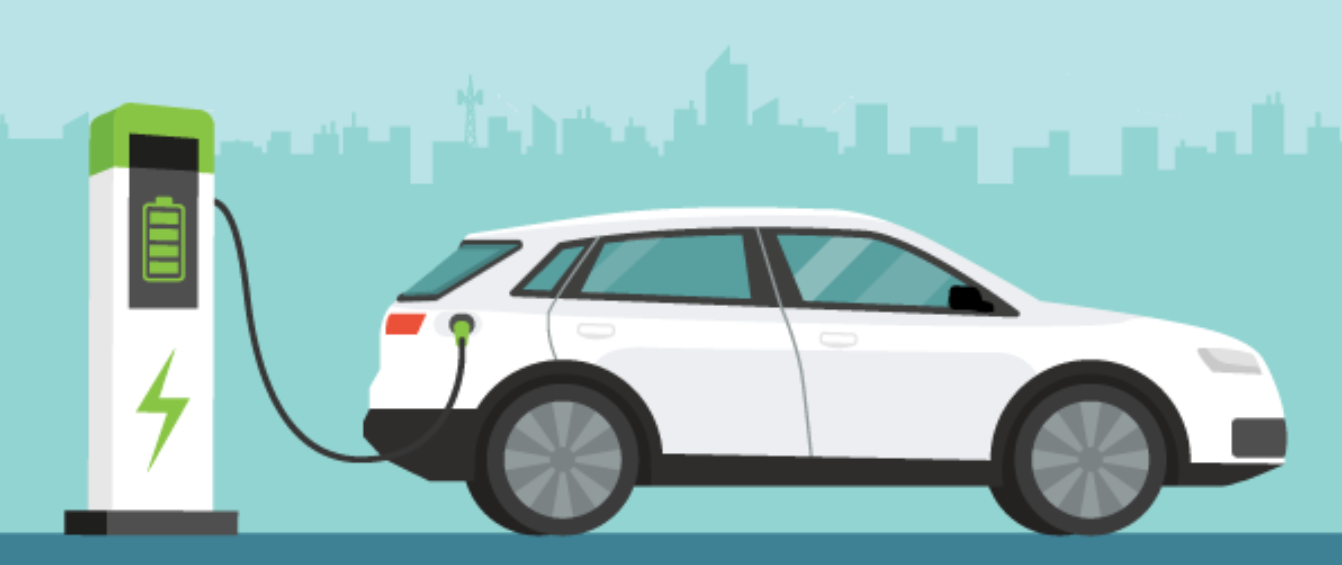EVs offer much greater efficiency than internal combustion vehicles, as they use only a fraction of the energy. Now is a great time to consider a new or used EV with incentives available from the government as well as from PSE&G. EV technologies have advanced quickly in recent years, which has dramatically extended their driving range and charging speed.
Actions you can take right now:
If you don’t already own an EV and are thinking about replacing an internal combustion engine vehicle:
- Learn about federal incentives for new and used EVs on the IRS website, which can be up to $7,500 for new EVs and up to $4,000 for used EVs. These federal incentives expire on September 30th 2025.
- Visit Charge-Up NJ to learn about state incentives of up to $4,000 towards a new EV purchase.
- Consider your range needs along with charging options:
- Do you drive long distances on a regular basis?
- Can you charge at home, at your workplace, or at school?
- Are public chargers available around your home or areas where you frequently drive?
If you already own an EV, including a Plug-in Hybrid:
- Visit PSE&G’s EV Charging Program to see if you qualify for their off-peak charging credit, which may cut your charging costs in half!
- If you don’t use a hard-wired charger at home, a new hard-wired charger can offer faster charging speeds and greater safety features.
- PSE&G’s EV Charging Program may fully cover installation costs for a new one.
- Charge-Up NJ offers up to $250 towards the charging equipment itself.
- You may also be eligible for up to $1,000 credit on your federal taxes for installing a new charger. This expires after the 2025 tax year.
How do EVs work and what kinds are available?
Electric vehicles (EVs) are vehicles powered by electric motors. They use electricity stored in batteries to drive the motor, which in turn powers the vehicle’s wheels.
There are a few different types of electric vehicles including:
- Battery Electric Vehicles (BEVs or commonly just EVs): These are fully electric cars that rely entirely on battery power. They do not use gasoline or diesel and need to be recharged by plugging them into an electric outlet or charging station.
- Plug-in Hybrid Electric Vehicles (PHEVs): These vehicles have both an electric motor and a traditional internal combustion engine. They can run on electricity for shorter distances, but when the battery is depleted, the gas engine kicks in to extend the vehicle’s range.
- Hybrid Electric Vehicles (HEVs): Like PHEVs, but they do not plug in to charge. Instead, they generate electricity through regenerative braking and the internal combustion engine to power the electric motor.

What are the benefits of EV ownership?
Energy Savings EVs are much more energy-efficient than gasoline or diesel vehicles. Electric motors convert a higher percentage of energy from the battery into movement (around 87-91%), while internal combustion engines typically convert only about 20-30% of energy from fuel into useful work, with the rest lost as heat.

Energy savings equals cost savings! Charging an EV costs much less than filling a gas tank, especially as electricity prices are generally lower and more stable than gasoline prices. See below for more information about charging costs.
Lower Greenhouse Gas Emissions and Reduced Air Pollution
EVs produce no emissions when in operation, which helps to reduce air pollution, combats climate change, and protect sensitive populations such as children, Asthma sufferers, and the elderly. Even when considering that EVs need to be charged using electricity produced by power plants, every mile driven with an EV in New Jersey is 70%-80% cleaner than a gasoline-fueled mile. This is driven by two important factors:
- Efficiency: Much less energy is used to power an EV compared to internal combustion vehicles. See next section for more details.
- The Electrical Grid: In NJ, the electrical grid is powered by sources much cleaner than gasoline.
Although manufacturing an EV can produce more emissions (due to battery production), studies show that, over the vehicle’s entire lifecycle, EVs have a significantly lower environmental impact than traditional vehicles. This is especially true when they are powered by cleaner electricity such as solar and wind.
How much money can I save with an EV? What incentives are available?
The cost of an electric vehicle (EV) versus an internal combustion engine vehicle can vary significantly depending on factors such as make and model, vehicle features, and the type of EV. While EVs often have a higher initial cost, government incentives and long-term operating cost savings can significantly reduce the overall expense compared to internal combustion engine vehicles.
Operating Costs for EVs (Fuel and Maintenance)
- Charging Costs: Charging an EV is much cheaper than refueling an internal combustion vehicle. The cost of electricity in SOMA with PSE&G is about $0.20 per kWh. To travel 100 miles in one of the top-selling EVs in NJ, that translates into about $5 of electricity. To travel 100 miles in a relatively fuel efficient internal combustion vehicle, you can expect to pay more than double that. With the PSE&G off-peak charging credit available in SOMA, charging could be 75% cheaper than buying gasoline! See below table.

- Maintenance Costs: EVs typically have lower maintenance costs because they have fewer moving parts and no need for oil changes. EVs don’t have the complex transmission systems or exhaust systems that internal combustion vehicles require maintenance for, which means fewer repairs and longer intervals between servicing. In some cases, brakes may never need to be replaced over the lifetime of an EV due to regenerative braking.
Federal, state, and utility company incentives
Charge Up New Jersey Program
The Charge Up New Jersey program provides rebates to New Jersey residents who purchase or lease new battery electric vehicles (BEVs). The program is designed to help offset the cost of purchasing an EV and make it more accessible to residents.
- Rebate Amount:
- $4,000 for eligible BEVs that cost $55,000 or less (MSRP before taxes and fees).
- The rebate amount may vary depending on the vehicle’s battery size and the availability of funding.
- Eligibility: The vehicle must be a new, eligible BEV and purchased or leased through a participating dealership. The applicant must be a New Jersey resident and meet certain income requirements for some rebate amounts.
State Sales Tax Exemption for EVs
In New Jersey, battery electric vehicles (BEVs) currently receive 50% off the state’s 6.625% sales tax. This discount is only for a limited time until mid-2025, but could save thousands of dollars. This discount applies to the sale of a new, fully electric vehicle.
Electric Vehicle Charging Incentives

The The New Jersey Electric Vehicle Charging Incentive Program offers up to $250 toward the charging equipment itself. You may also be eligible for up to $1,000 credit on your federal taxes for installing a new charger.
This includes rebates and funding through the New Jersey Clean Energy Program, which supports the installation of electric vehicle charging infrastructure. Rebates can help defray the cost of home charging equipment and installation, making EV ownership more convenient.
Federal Tax Credit
This credit can be up to $7,500 for new EVs and $4,000 for used EVs, depending on your income, the vehicle’s battery size, and the manufacturer. These tax credits expire on September 30th 2025 as a result of the 2025 tax and spending bill. Note that some automakers may have phased out the full credit once they reach a certain number of EVs sold, so the amount may vary.
Utility Company Incentives
Several utility companies including PSE&G offer rebates or discounts on electric vehicle charging equipment and installation that can completely offset the costs.
As mentioned earlier, some utilities including PSE&G offer reduced rates for EV owners who charge their cars during off-peak hours. This can help lower the cost of electricity for EV owners by an additional 50% for PSE&G customers.
Electric Vehicle Tax Deduction (State Income Tax)
New Jersey provides a deduction for EV-related expenses under the state’s Income Tax Deduction for Clean Energy Vehicles. This allows taxpayers to deduct certain costs related to owning an EV, such as the cost of the vehicle and installation of charging equipment, depending on specific circumstances.
How to Apply for State Incentives
To apply for the Charge Up New Jersey rebate and other state incentives, residents typically need to go through a formal process that involves:
- Submitting the required forms through the New Jersey Division of Environmental Protection (NJDEP) or directly via a participating dealer or online.
- Meeting eligibility criteria, which may include providing proof of residency and submitting vehicle purchase documentation.
What are my options for charging?
Level 1 Charging
New EVs usually come with a portable charger, allowing you to easily plug in to standard 120-volt outlets. If you drive under about 30 miles per day, your EV will fully recharge overnight with level 1 charging at home. If level 1 charging is all you have access to at home, you may need to charge at public charging stations when traveling further distances. You may also consider installing a level 2 charger at home.
Level 2 Charging
Level 2 charging uses higher-powered equipment compared to level 1, allowing much faster charging speeds. This may require electrical work to install it in a convenient place for charging at your home. Having a level 2 charging station at home will allow you to wake up to a fully charged vehicle everyday. Level 2 charging equipment is also available in many public areas where vehicles are parked for a significant amount of time — like workplaces, malls, and shopping centers.
-
Wiring Requirements:
– Level 2 charging requires a 240-volt connection, like the kind used for large appliances like clothes dryers or electric ovens.
– The electrical circuit should be dedicated to the EV charging station to ensure safety and sufficient power.
– The wiring itself typically consists of a 40 to 50 amp circuit, but the exact specifications may vary depending on the charger and the vehicle’s requirements.
– The actual equipment, called an EVSE (Electric Vehicle Supply Equipment), can be in the form of a hard-wired unit or a portable unit plugged into the wall. It will be installed at the location where you plan to park your car, such as your garage or driveway. Many EVSEs are rated for outdoor usage if you prefer not to charge in your garage or don’t have a garage at all.
-
Charging Speed: Level 2 chargers can add up to 60 miles of range per hour depending on the car and charger.
-
Cost: Installation costs vary widely depending on factors such as panel upgrades, distance to the electrical panel, and the contractor you choose. See previous sections for incentive options offered by the state and utility companies.
DC Fast Charging at Public Places
Direct connect (DC) fast chargers are available in public places only. You may have heard them called “Rapid Charging” or “Super Charging”. They rely on a larger electric grid connection, which delivers power directly to the vehicle, as opposed to Level 1 and 2 chargers which must convert the current to a lower power level before entering the vehicle. This direct connection results in a much faster and more powerful charge that provides 10 – 20 miles of range per minute. DC fast charging rates are improving as the technology rapidly evolves. Most BEVs come equipped to handle DC fast charging technology, but always check your vehicle’s charging capability and connector before you plug in.
What about driving range and battery concerns?
What about the range of EV’s compared to internal combustion vehicles?
Many of us spend a lot of time driving and sometimes travel far distances. You still have options if you are considering an EV. The first is to have a dedicated charging solution available at your home. There is nothing easier than waking up to a fully charged car every day like you do with your mobile phone. Most electricians in the area are familiar with what is necessary to install a charging system. Costs vary depending on multiple factors such as your home’s electrical service capacity. As mentioned previously, there are federal tax credits, and state and utility programs available to offset some or all of the costs to install a charging system.
When a home charging solution is not feasible, you can still own an EV and visit charging stations as you would gas stations for internal combustion vehicles. Charging stations have become much more common in recent years. As of the publishing of this blog post, there are at least 4 rapid-charging stations around SOMA – in the Whole Foods parking lot, behind the Wawa on US-22 in Union, and 2 stations on Morris Ave in Springfield. These rapid-charging stations can provide enough range for hundreds of miles in as little as 10-15 minutes. Hybrids (HEVs or PHEVs) may also be a good choice if you do a lot of driving on a regular basis and can’t charge at home.
What about battery replacement?
- Battery Failure and Replacement: Complete battery failures are not common during the average ownership lifetime of modern EVs. EV manufacturers provide warranties on the battery that are comparable to the drivetrain of internal combustion vehicles. And like the drivetrains of internal combustion vehicles, the battery will likely last much longer than the warranty – depending on how the vehicle is driven. For example, EV manufacturers do not recommend allowing the battery to drain completely, or to be charged to 100% on a regular basis.
- Battery Degradation: Over time, EV batteries will degrade and therefore have reduced range/capacity. EVs are improving significantly on battery degradation and may only see a small percentage of capacity loss over their lifetime. Some brands and models are known to have better battery technologies that result in less degradation. These include advanced temperature management systems to keep the battery within an acceptable range during extreme conditions.
What about the environmental impact of the battery?
- Battery Production: Mining and processing of the raw materials needed to produce the larger batteries needed for EV’s has been shown to create more carbon emissions than production of internal combustion vehicles. However, this is quickly offset over the first few years of EV driving. Over the lifetime of an EV, emissions are still significantly lower for EVs compared to internal combustion vehicles, by up to 60% according to the EPA.
- Battery Recycling: EV batteries contain hazardous materials and must be recycled properly, which has been an industry challenge. However the options for recycling used EV batteries are increasing. In addition to re-using them for EVs and other applications, some companies are using the batteries to create large energy storage facilities to save money and provide backup if the grid goes down. As EV adoption increases, so will the recycling technologies available.
What about performance in cold weather?
Extreme cold can reduce the efficiency of EV batteries and lead to a decrease in range. Cold temperatures can slow down chemical reactions in the battery, requiring more energy to keep the cabin warm, which further reduces the available range. The latest EVs typically have systems that can monitor battery temperature and performance and even pre-condition the battery for longer trips and quicker charging. When selecting your EV, ask your dealer about these systems if you are concerned about cold weather performance.
